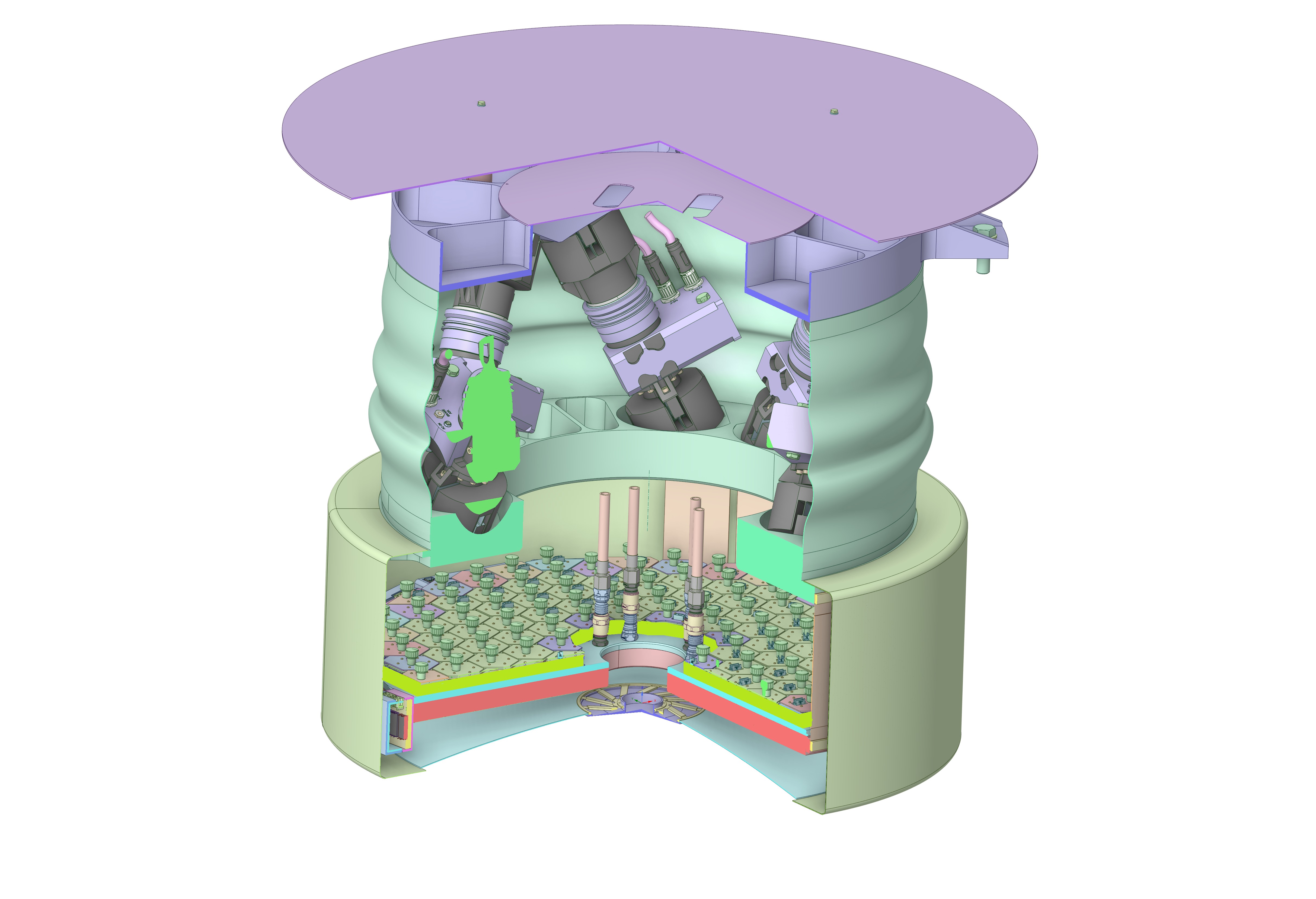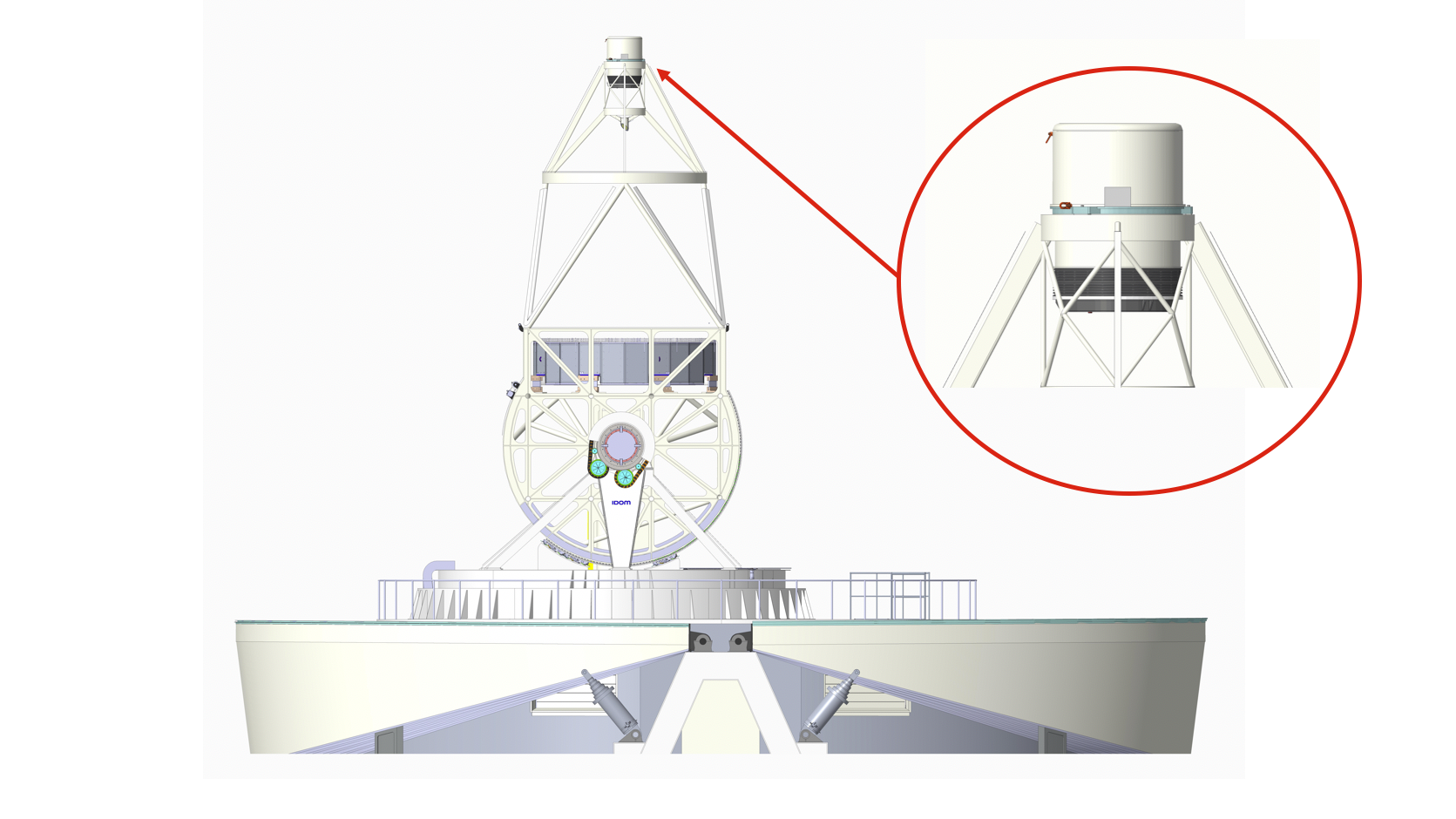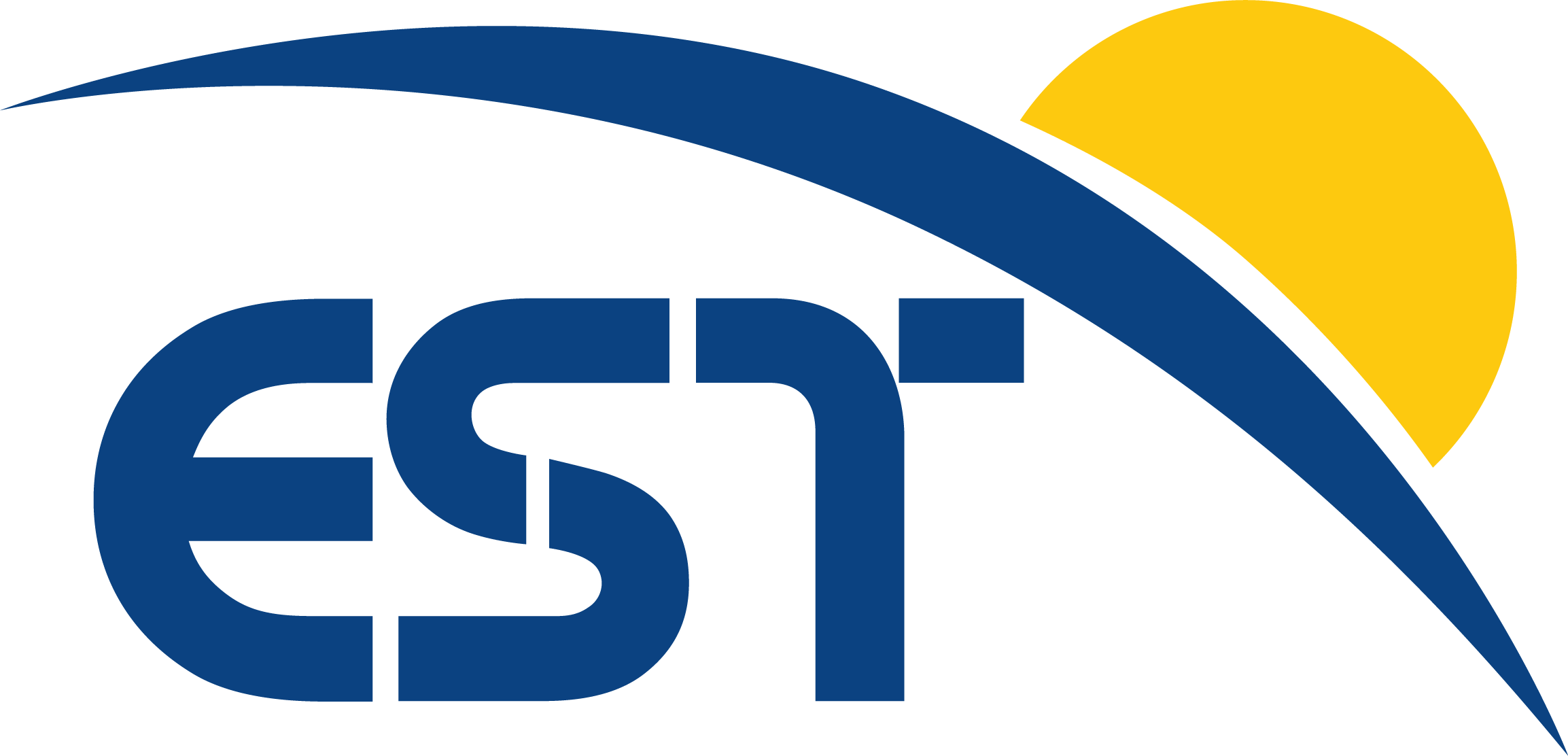Secondary Mirror
Excellent image quality and high photon throughput are two main design drivers dictated by the EST Science Requirement Document. To achieve those goals, the quality and efficiency of the telescope optical surfaces must be very high and the number of such surfaces must be kept to an absolute minimum. The EST preliminary design implements several strategies to reduce the number of optical surfaces, including the use of an Adaptative Secondary Mirror (ASM). The EST ASM has a triple functionality. It not only acts as a secondary mirror (M2), but also as a deformable mirror and as a tip-tilt mirror. With the help of the ASM, only seven mirror surfaces are needed to transfer the solar light to the telescope science focus, which is a significant improvement over existing telescopes.
The ASM is formed by three main subassemblies:
- The ASM Assembly itself (with a protective cover when not in operation).
- The Positioning Assembly, which encompasses a hexapod with fast tip-tilt and positioning stages.
- The Base Frame, consisting of the interface frame with the Telescope Structure, the cooled (removable) shroud, and the sealing of the enclosure.

Figure 1. General view of the ASM design by TNO. Credit: TNO/B. Dekker.
ASM Assembly
The ASM unit is a sophisticated piece of optical engineering designed to correct wavefront distortions in real-time, ensuring the clarity and accuracy of the data collected. It is a 0.8-m on-axis ellipsoid that defines the whole system aperture stop. The latter property allows the ASM to be assembled as an adaptive mirror and provide AO capabilities for correcting atmospheric turbulence. The ASM is baselined to have around 2000 actuators (approximately 50 actuators along the pupil diameter) with a stroke of the order of 16 microns to correct high-order aberrations. The ASM will also correct the image jitter caused by, e.g., atmospheric turbulence, wind disturbance, or vibrations. This image jitter correction is about ±6.5′′ at a bandwidth of 20 Hz and ±1.2′′ at a bandwidth of 350 Hz.
The ASM design integrates advanced materials and cutting-edge technologies to maintain its operational efficacy under varying thermal and mechanical conditions. The mirror system comprises multiple actuators, enhancing the mirror ability to correct for high-order aberrations. The actuators are designed to operate at high speed, enabling real-time corrections that are essential for capturing sharp and clear images of the rapidly changing solar surface. Each actuator and sensor will undergo thorough testing to ensure they meet the stringent performance criteria.
A critical aspect of the ASM design is its cooling system, needed to remove the heat load generated by both the solar radiation and the electronic components. The cooling system employs a combination of passive and active cooling techniques. The ASM mirror is equipped with a sun-hat and other ancillary electronics to dissipate heat effectively. A preliminary thermal analysis indicates that the cooling mechanisms are sufficient to maintain operational temperatures within safe limits.

Figure 2. Rendering of the Secondary Mirror
ASM Positioning Assembly
The ASM design incorporates a hexapod support structure, which provides the necessary rigidity while allowing for fine adjustments of the mirror position and orientation. This hexapod structure is crucial for compensating any misalignments and ensuring that the mirror remains perfectly aligned with the primary mirror and other optical components of EST. The hexapod is mounted with 5 degrees of freedom (piston, δx, δy, and tip-tilt) to perform AO tasks as well.
The ASM Assembly will be sealed (dust-tight) during operation. The volume protruding from the Telescope Structure top-end is cylindrical in shape with rounded edges. The maximum ASM Assembly mass is estimated to be 750 kg, including systems engineering margins.

Figure 3. Detail of the EST secondary mirror
The ASM has been identified as a risky component for the project, since it is a critical part for the performance of the telescope, and in some aspects has more demanding requirements than previously manufactured ASMs. In order to mitigate the risk, two different companies (TNO and A.D.S) have been subcontracted to perform the preliminary design, based on two different technologies. Under these two contracts, prototypes will be delivered allowing the project to choose the best technical solution.
